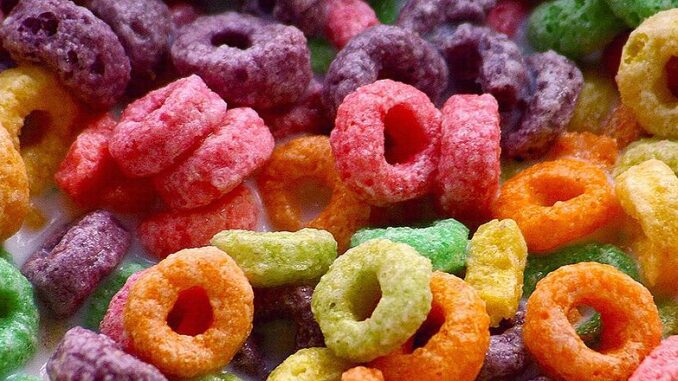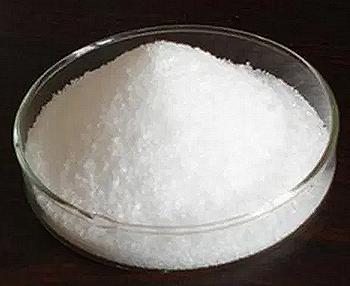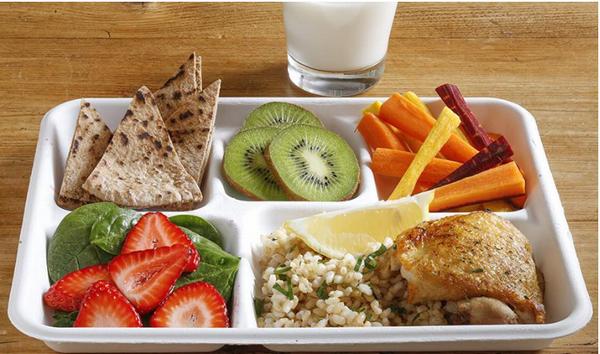
CHARLESTON, West Virginia, March 27, 2025 (ENS) – West Virginia, where the state’s 1.7 million residents experience high rates of preventable deaths and a lower life expectancy than the national average, adopted a ban on seven chemical food dyes and preservatives this week. The chemicals have been linked to neurobehavioral problems and cancer in some children.
Foods and drinks colored with these red, blue, green and yellow dyes will no longer be served to children in West Virginia schools as of August 2025. A statewide ban goes into effect in 2028.
Lawmakers in more than 20 states, from right-leaning West Virginia to left-leaning California, are beginning to restrict access to the dyes and preservatives, of which the new Health and Human Services Secretary Robert F. Kennedy Jr. has been a critic.
Signing the bill, Governor Patrick Morrisey, a Republican, said, “West Virginia ranks at the bottom of many public health metrics, which is why there’s no better place to lead the Make America Healthy Again mission. By eliminating harmful chemicals from our food, we’re taking steps toward improving the health of our residents and protecting our children from significant long-term health and learning challenges.”
The new West Virginia law deems these seven food additives unsafe and prohibits their use in any meal served in a school nutrition program beginning August 1, 2025:
- – Red Dye No. 3: This dye is also banned across the country. On January 15, 2025, in the final week of the Biden administration, the Food & Drug Administration, FDA, revoked the authorization for the use of FD&C Red No. 3 as a matter of law, based on cancer produced by the substance in laboratory male rats. Relevant exposure levels to Red No. 3 for humans are typically much lower than those that cause the effects shown in male rats, according to the FDA. It is used to color: confections, beverages, cereals, ice cream cones, frozen dairy desserts, popsicles, frostings and icings.
- – Red Dye No. 40: Found in cereal, beverages, gelatins, puddings, dairy products, and confections, this is one of the most widely used food dyes, and one of the most controversial. It has been linked to allergies, migraines, and mental disorders in children.
- – Yellow Dye No. 5: This coloring is used in: confections, cereals, snack foods, beverages, condiments, baked goods, and yogurt. In the United States, Canada, and many EU countries, products that contain Yellow 5 food dye are legal, but they must be sold with a warning label. The label should read that the product might cause allergic reactions like bronchial asthma. Sensitivity to Yellow Dye No. 5 is often present in people with a sensitivity to aspirin, according to Web MD.
- – Yellow Dye No. 6: This dye is used to color: cereals, snack foods, baked goods, gelatins, beverages, dessert powders, crackers, and sauces. Health effects include: Allergic reactions, even at doses within the acceptable daily intake; behavioral problems like hyperactivity and attention difficulties in children, hypersensitivity reactions. Yellow Dye No. 6, along with other dyes like Red 40 and Yellow 5, has been found to be contaminated with benzidine or other carcinogens.
- – Blue Dye No. 1: This color is used in confections, beverages, cereals, frozen dairy desserts, popsicles, frostings and icings. Potential side effects include allergic reactions, and some studies suggest possible links to hyperactivity, attention-deficit/hyperactivity disorder, ADHD, symptoms, and cancer, according to a 2010 study by the Center for Science in the Public Interest, “Food Dyes: a Rainbow of Risks.”
- – Blue Dye No. 2: Used in baked goods, cereals, snack foods, ice cream, confections, and yogurt. Some studies clearly indicate that that the use of dyes, including artificial blue dyes, can have toxic and harmful effects, according to a 2021 article in the journal Advances in Nutrition.
- – Green Dye No. 3: Used to color cereal, ice cream, sherbet, drink mixers, and baked goods. Animal studies show it may increase bladder and testes tumors and decrease hemoglobin levels. This dye is not approved for use in food in the European Union.
Beginning January 1, 2028, these seven dyes, along with the preservatives butylated hydroxyanisole and propylparaben, must not be contained in food items for sale anywhere in West Virginia.
The distant deadline is intended to allow companies time to adjust, protecting consumers from price increases, the governor said.
“Today’s announcement represents a step toward a productive dialogue about how West Virginia and our country can eat healthier and address some of the vexing health care problems facing our citizens,” Governor Morrisey said. “Through the implementation process, I look forward to advancing policies which improve our health care outcomes, maintain our jobs, and respect the FDA’s and supply channel’s role in the process.”

The preservative butylated hydroxyanisole, BHA, is “reasonably anticipated to be a human carcinogen based on sufficient evidence of carcinogenicity from studies in experimental animals,” according to the 15th Report on Carcinogens by the U.S. National Toxicology Program, published in 2021.
BHA is added to butter, lard, meats, cereals, baked goods, sweets, beer, vegetable oils, potato chips, snack foods, nuts and nut products, dehydrated potatoes, and flavoring agents. It is used in sausage, poultry and meat products, dry mixes for beverages and desserts, glazed fruits, chewing gum, active dry yeast, defoaming agents for beet sugar and yeast, and emulsion stabilizers for shortening. BHA stabilizes the petroleum wax coatings of food packaging.
BHA is considered by the U.S. Food and Drug Administration to be safe when the antioxidant content does not exceed 0.02% by weight of the food’s total fat or oil content.
But dietary exposure to BHA caused benign and malignant tumors of the forestomach (papilloma and squamous-cell carcinoma) in rats of both sexes and in male mice and hamsters, the 15th Report on Carcinogens states.
“We should not be forced to police our own foods,” said Republican Senator Laura Wakim Chapman, who heads the West Virginia Senate’s Health and Human Resources Committee. “No more toxic colors, no more poisoning ourselves and our children. No more unnecessary risks. Our health is not for sale.”
Other States Have Acted Too
West Virginia’s law follows a shorter list of chemicals banned in California public schools last year and a similar list of dyes banned in Virginia last week.
Virginia Governor Glenn Youngkin signed legislation banning public elementary and secondary schools from serving any food that contains the same seven color additives as West Virginia has banned for school meals
“I’m encouraged by this truly non-partisan effort that started with parents stepping forward and saying let’s work together to provide healthier food choices for our kids during the school day,” said Governor Youngkin. “HB1910 and SB1289 are grassroots bills at their best and provide Virginia families with healthier options for school meals.”

The California School Food Safety Act of September 2024 bans six artificial food dyes from food served in public schools, including all the dyes banned in West Virginia with the exception Red No. 3, which is already banned nationwide and in California
The California Food Safety Act of 2023 banned Red Dye No. 3, as well as brominated vegetable oil, propylparaben, and potassium bromate from food and beverages made and sold in the state.
New Rules Make Food Safer, Pose Risks for Businesses
American Beverage Association officials came together with union members of Teamsters Local 175 for a press briefing Tuesday on their assertion that the new West Virginia law will limit consumer food choices, raise grocery store prices, impact jobs, and impose new costs on businesses.
American Beverage Senior Vice President Meridith Potter told reporters, “We want to be really clear about the impact of this sweeping ban, it will hurt West Virginians, both consumers, workers and the overall economy, all over ingredients that have been proven safe.”
Focusing on prices, Potter said, “West Virginians deserve choice, information and facts, not fear,” Potter said. “The fact is this bill will take away choices from West Virginians by eliminating products in nearly every aisle of the grocery store.”
Potter said the beverage industry supports over 1,800 good-paying jobs in the state and contributes $1.7 billion to the local economy. She warned that the food dye ban will negatively affect these jobs and the economy.
Teamsters Local 175 represents more than 600 members in the beverage industry across West Virginia. Secretary Treasurer Luke Farley said that Coca-Cola and Pepsi representatives say that about half of their inventory will be eliminated from the state, costing jobs and not just in the beverage industry.
“What we refer to as your ‘Mom and Pop stores,’ your locally-owned convenient stores, they’re not going to be able to have sodas and food on shelves, and that’s the majority of what those people sell, that’s how they make their living,” Farley said.
Thirty-six color additives are approved by the U.S. Food and Drug Administration for use in food and drinks. Nine petroleum-based chemical dyes, including Red 3, have been allowed in U.S. food.
Public health advocates have been lobbying for state and federal action for years, pointing to research that links food dyes and other chemical additives to health risks, including exacerbating symptoms of attention-deficit/hyperactivity disorder in some children and animal research linking certain additives to cancers.
The European Union and some countries, including Australia and Japan, have banned or restricted the use of certain food dyes because of potential health risks.
The National Confectioners Association, a trade group for chocolate, candy, gum and mints sellers, said the new regulations will make food more expensive, less accessible and lead to less variety on grocery store shelves.
“Food safety is the number one priority for U.S. confectionery companies, and we will continue to follow and comply with FDA’s guidance and safety standards. Our consumers and everyone in the food industry want and expect a strong FDA, and a consistent, science-based national regulatory framework.”
Charles Leftwich, vice president of food safety and quality assurance for Sysco Corp., the world’s largest food service distributor, said food safety policies should be supported by science and “be consistently applied across all geographies.”
“We shouldn’t have a fragmented approach when it comes to food safety, because it breeds a lack of trust and confidence with within consumers,” Leftwich said in an interview with The Associated Press.
Travis Austin, the child nutrition director with the Cabell County Schools system, told the AP that the policy “a step in the right direction” and said it will be up to manufacturers to rework their formulas to remain competitive.
“It’s all about money,” he said. “If Froot Loops and Lucky Charms aren’t going to change their formulations, then we’re not going to buy them. We’ll buy ones that do.”
Featured image: Colored cereal in a bowl of milk, 2007 (Photo by Rosana Prada)



